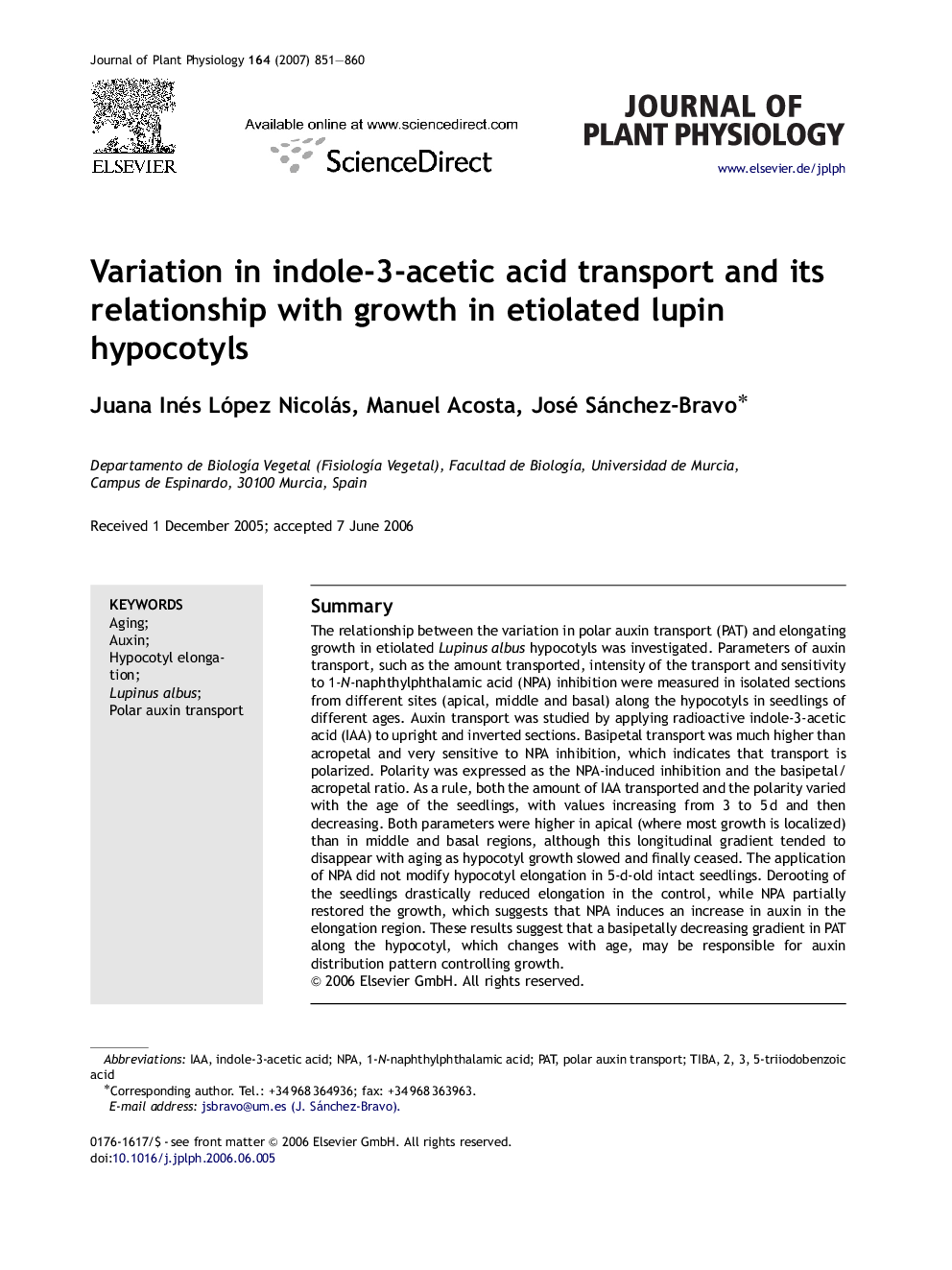| Article ID | Journal | Published Year | Pages | File Type |
|---|---|---|---|---|
| 2058042 | Journal of Plant Physiology | 2007 | 10 Pages |
SummaryThe relationship between the variation in polar auxin transport (PAT) and elongating growth in etiolated Lupinus albus hypocotyls was investigated. Parameters of auxin transport, such as the amount transported, intensity of the transport and sensitivity to 1-N-naphthylphthalamic acid (NPA) inhibition were measured in isolated sections from different sites (apical, middle and basal) along the hypocotyls in seedlings of different ages. Auxin transport was studied by applying radioactive indole-3-acetic acid (IAA) to upright and inverted sections. Basipetal transport was much higher than acropetal and very sensitive to NPA inhibition, which indicates that transport is polarized. Polarity was expressed as the NPA-induced inhibition and the basipetal/acropetal ratio. As a rule, both the amount of IAA transported and the polarity varied with the age of the seedlings, with values increasing from 3 to 5 d and then decreasing. Both parameters were higher in apical (where most growth is localized) than in middle and basal regions, although this longitudinal gradient tended to disappear with aging as hypocotyl growth slowed and finally ceased. The application of NPA did not modify hypocotyl elongation in 5-d-old intact seedlings. Derooting of the seedlings drastically reduced elongation in the control, while NPA partially restored the growth, which suggests that NPA induces an increase in auxin in the elongation region. These results suggest that a basipetally decreasing gradient in PAT along the hypocotyl, which changes with age, may be responsible for auxin distribution pattern controlling growth.
